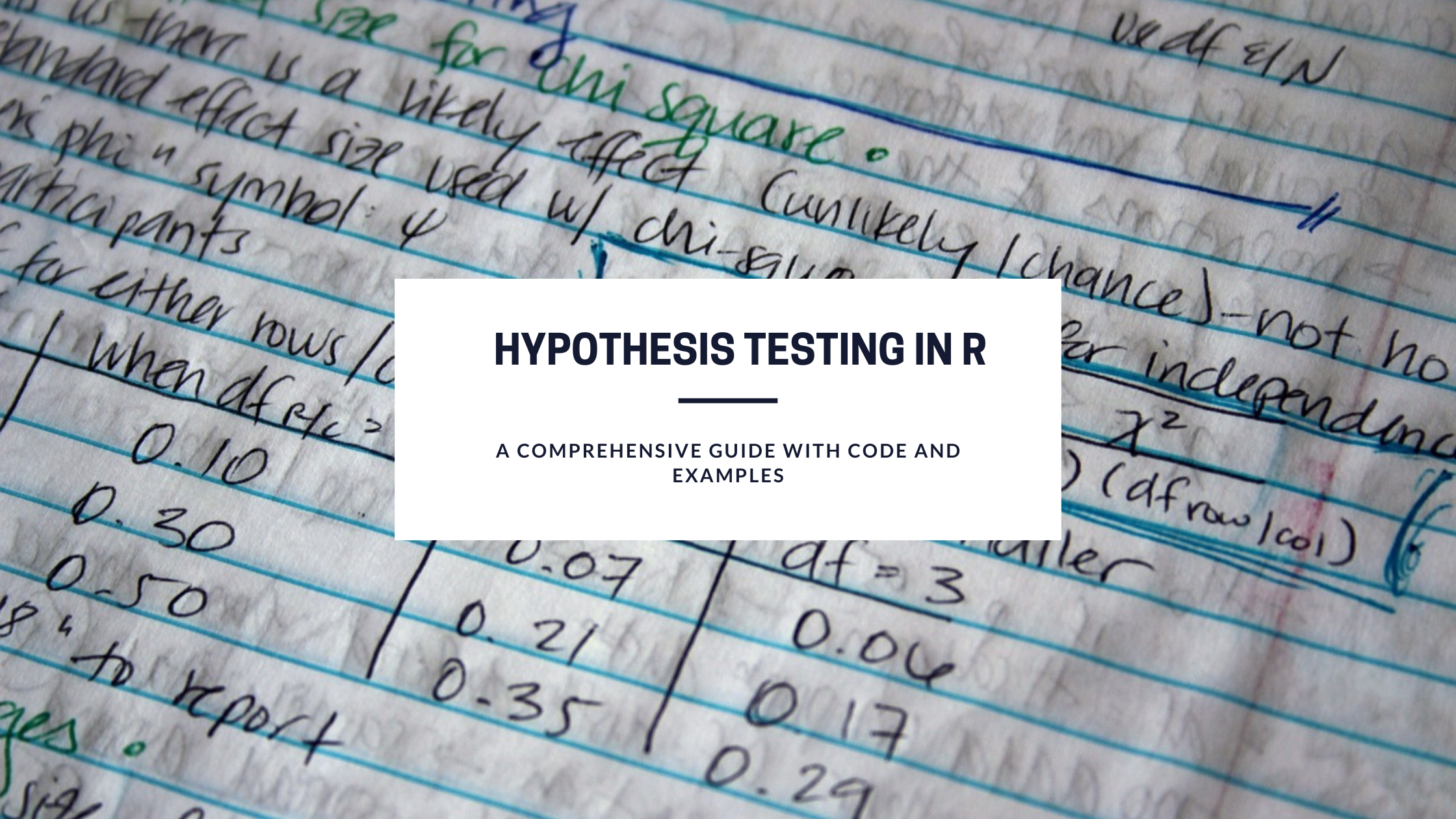Hypothesis testing is a fundamental statistical technique used to make inferences about population parameters based on sample data. It helps us determine whether an observed effect or difference is statistically significant or if it could have occurred by random chance. In this guide, we’ll explore hypothesis testing in R, a powerful statistical programming language, through practical examples and code snippets.
Understanding the Hypothesis Testing Process
Before diving into code examples, let’s grasp the key concepts of hypothesis testing:
- Null Hypothesis (H0): This is the default assumption that there is no significant effect, difference, or relationship in the population. It’s often denoted as H0.
- Alternative Hypothesis (Ha): This is the statement we want to test; it asserts that there is a significant effect, difference, or relationship in the population. It’s often denoted as Ha.
- Significance Level (α): This is the predetermined threshold that defines when we reject the null hypothesis. Common values are 0.05 or 0.01, representing a 5% or 1% chance of making a Type I error (false positive), respectively.
- Test Statistic: A statistic calculated from the sample data that measures the strength of evidence against the null hypothesis.
- P-value: The probability of observing a test statistic as extreme as, or more extreme than, the one calculated from the sample data under the null hypothesis. A smaller p-value suggests stronger evidence against the null hypothesis.
- Decision Rule: Based on the p-value, we decide whether to reject the null hypothesis. If the p-value is less than α, we reject H0; otherwise, we fail to reject it.
Now, let’s explore some practical examples of hypothesis testing in R.
Example 1: One-Sample T-Test
Suppose we have a dataset of exam scores, and we want to test if the average score is significantly different from 75.
# Sample data
scores <- c(78, 85, 72, 91, 88, 77, 84, 80, 79, 82)
# One-sample t-test
result <- t.test(scores, mu = 75)
# Print the result
cat("Test Statistic:", result$statistic, "\n")
cat("P-value:", result$p.value, "\n")
# Decision
if (result$p.value < 0.05) {
cat("Reject the null hypothesis. The average score is significantly different from 75.\n")
} else {
cat("Fail to reject the null hypothesis. There is no significant difference in the average score.\n")
}
In this example, we perform a one-sample t-test to determine if the sample mean is significantly different from 75. The resulting p-value will help us make the decision.
Example 2: Two-Sample T-Test
Let’s say we want to compare the exam scores of two different classes (Class A and Class B) to see if there is a significant difference between their average scores.
# Sample data
class_a_scores <- c(78, 85, 72, 91, 88)
class_b_scores <- c(77, 84, 80, 79, 82)
# Two-sample t-test
result <- t.test(class_a_scores, class_b_scores)
# Print the result
cat("Test Statistic:", result$statistic, "\n")
cat("P-value:", result$p.value, "\n")
# Decision
if (result$p.value < 0.05) {
cat("Reject the null hypothesis. There is a significant difference in the average scores of Class A and Class B.\n")
} else {
cat("Fail to reject the null hypothesis. There is no significant difference in the average scores.\n")
}
Here, we perform a two-sample t-test to compare the means of two independent samples (Class A and Class B).
Example 3: Chi-Square Test of Independence
Suppose we have data on the preferred mode of transportation for two groups of people (Group X and Group Y), and we want to test if there is an association between the groups and their transportation preferences.
# Create a contingency table
transport_data <- matrix(c(20, 30, 10, 40), nrow = 2)
colnames(transport_data) <- c("Car", "Bus")
rownames(transport_data) <- c("Group X", "Group Y")
# Chi-square test of independence
result <- chisq.test(transport_data)
# Print the result
cat("Chi-Square Statistic:", result$statistic, "\n")
cat("P-value:", result$p.value, "\n")
# Decision
if (result$p.value < 0.05) {
cat("Reject the null hypothesis. There is a significant association between the groups and transportation preferences.\n")
} else {
cat("Fail to reject the null hypothesis. There is no significant association between the groups and preferences.\n")
}
In this example, we use a chi-square test to determine if there is an association between the groups and their transportation preferences.
Conclusion
Hypothesis testing is a powerful tool for making data-driven decisions in various fields, from medicine to business. In R, you can conduct a wide range of hypothesis tests using built-in functions and libraries like t.test() and chisq.test(). Remember to set your significance level appropriately, and interpret the results cautiously based on the p-value.
By mastering hypothesis testing in R, you’ll be better equipped to draw meaningful conclusions from your data and make informed decisions in your research and analysis.
